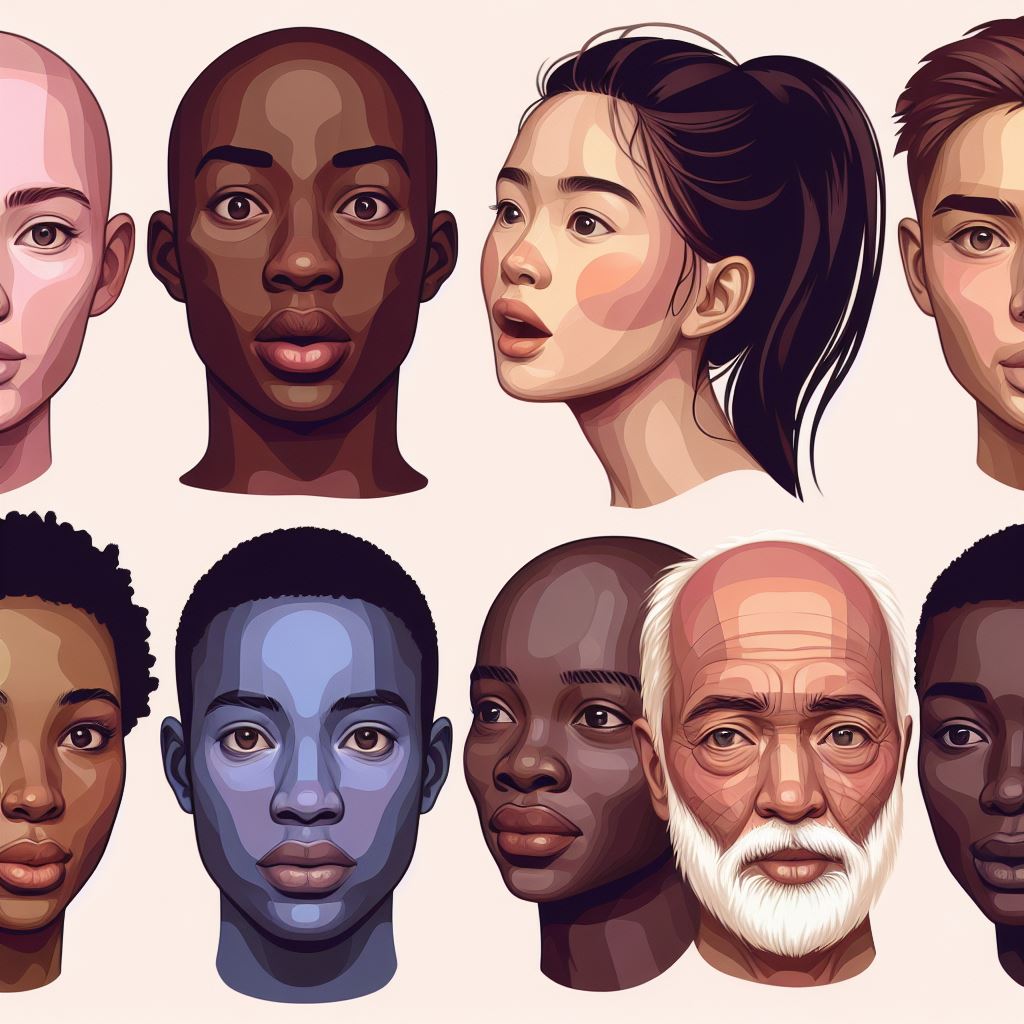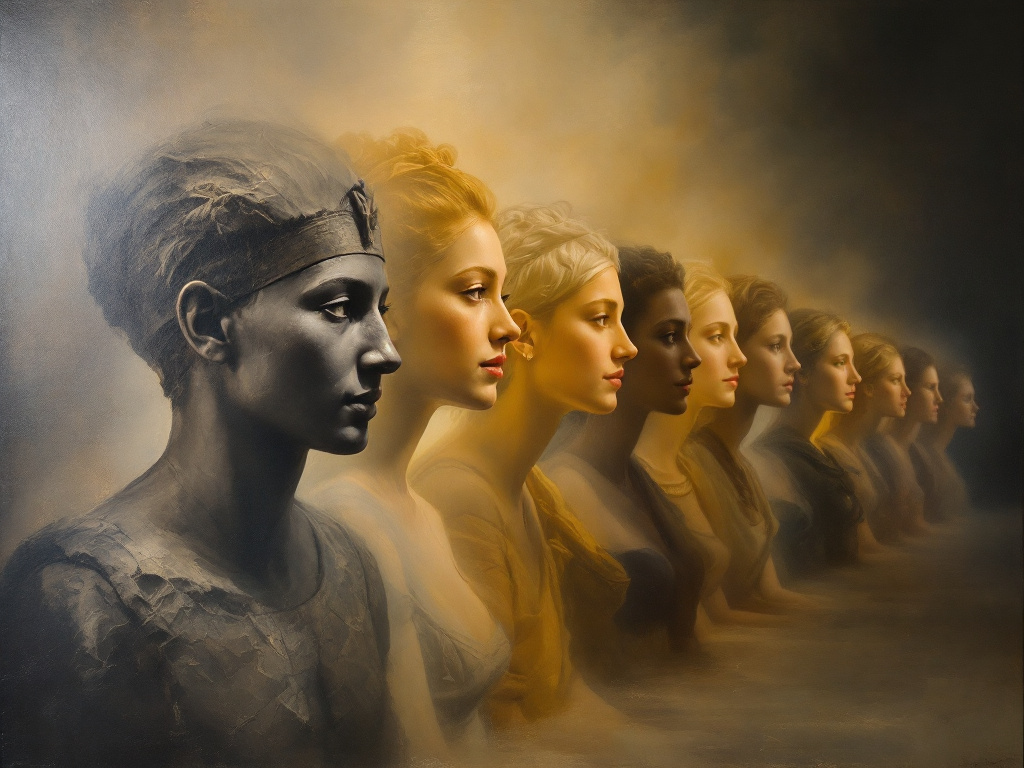Portrait painting is a timeless art form that has captivated artists and viewers alike for centuries. The ability to capture the essence of a person on canvas is both challenging and rewarding. Whether you’re a beginner looking to dip your toes into the world of portraiture or an experienced artist seeking to refine your skills, mastering the basics is crucial. In this comprehensive guide, we’ll explore the essential techniques that will help you create stunning portraits that not only resemble your subject but also convey their personality and emotions.
Listen to our Podcast on Portrait Painting
The art of portrait painting goes beyond mere representation; it’s about breathing life into your canvas and telling a story through your brushstrokes. As you embark on this journey, you’ll discover that each portrait is a unique adventure, filled with countless decisions about composition, color, and technique. From capturing the subtle nuances of facial expressions to mastering the play of light and shadow, portrait painting offers endless opportunities for creativity and self-expression.
In this article, we’ll delve into the fundamental techniques that form the backbone of successful portrait painting. We’ll explore everything from choosing the right materials and setting up your workspace to understanding facial anatomy and creating lifelike skin tones. Along the way, we’ll share tips and tricks from seasoned artists, discuss common pitfalls to avoid, and provide practical exercises to help you hone your skills.
Whether you’re working with oils, acrylics, or watercolors, the principles we’ll cover apply across all mediums. By the end of this guide, you’ll have a solid foundation in portrait painting techniques and the confidence to tackle your next portrait project with enthusiasm and skill. So, grab your brushes, set up your easel, and let’s dive into the fascinating world of portrait painting!
Portrait Inspiration from the Masters
| Painting | Artist | Year | Gallery | Link |
|---|---|---|---|---|
| Mona Lisa | Leonardo da Vinci | 1503-1506 | Louvre, Paris | View |
| Girl with a Pearl Earring | Johannes Vermeer | c. 1665 | Mauritshuis, The Hague | View |
| Self-Portrait with a Straw Hat | Vincent van Gogh | 1887 | Van Gogh Museum, Amsterdam | View |
| Self-Portrait | Rembrandt van Rijn | 1660 | Mauritshuis, The Hague | View |
| Arrangement in Grey and Black No.1 (Whistler’s Mother) | James McNeill Whistler | 1871 | Musée d’Orsay, Paris | View |
| Portrait of Adele Bloch-Bauer I | Gustav Klimt | 1907 | Neue Galerie, New York | View |
| American Gothic | Grant Wood | 1930 | Art Institute of Chicago | View |
| The Two Fridas | Frida Kahlo | 1939 | Museo de Arte Moderno, Mexico City | View |
| Portrait of Madame X | John Singer Sargent | 1884 | Metropolitan Museum of Art, New York | View |
| Le Rêve | Pablo Picasso | 1932 | Private Collection | View |
Setting the Stage: Materials and Workspace
Before we delve into the techniques, it’s crucial to set yourself up for success by choosing the right materials and creating an optimal workspace. Here’s what you need to consider:
Choosing Your Medium
Different mediums offer unique advantages for portrait painting:
- Oils: Known for their rich colors and blendability, oils are perfect for creating subtle transitions and luminous skin tones.
- Acrylics: Fast-drying and versatile, acrylics are great for beginners and allow for quick layering techniques.
- Watercolors: Ideal for creating soft, ethereal portraits with a focus on light and transparency.
Essential Tools
Regardless of your chosen medium, you’ll need:
- A variety of brushes (flat, round, and filbert)
- A palette for mixing colors
- A canvas or painting surface
- An easel
- A palette knife for mixing and applying paint
Creating Your Workspace
Set up a well-lit area with plenty of natural light if possible. Ensure you have enough space to step back and view your work from a distance. Keep your materials organized and easily accessible to maintain a smooth workflow.
Understanding Facial Anatomy
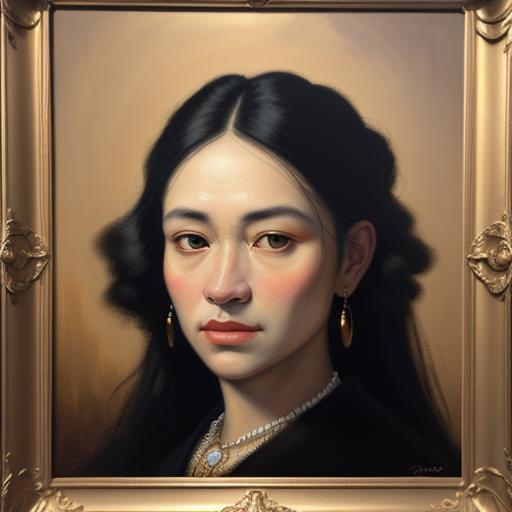
A solid grasp of facial anatomy is the foundation of great portrait painting. Let’s break it down:
The Structure of the Face
- Skull: Understanding the underlying bone structure helps you capture the unique shape of each face.
- Muscles: Facial muscles influence expressions and contours.
- Proportions: Learn the basic proportions of the face to create accurate representations.
Key Features

Pay special attention to:
- Eyes: Often called the “windows to the soul,” eyes are crucial in capturing your subject’s essence.
- Nose: Understanding how light and shadow play on the nose is key to creating dimension.
- Mouth: The shape and expression of the mouth can convey a wide range of emotions.
- Ears: Often overlooked, ears contribute to the overall balance of the face.
Mastering Light and Shadow
The interplay of light and shadow is what brings a portrait to life. Here’s how to master it:
Understanding Value
Value refers to the lightness or darkness of a color. In portrait painting, understanding value is crucial for creating depth and dimension.
Identifying the Light Source
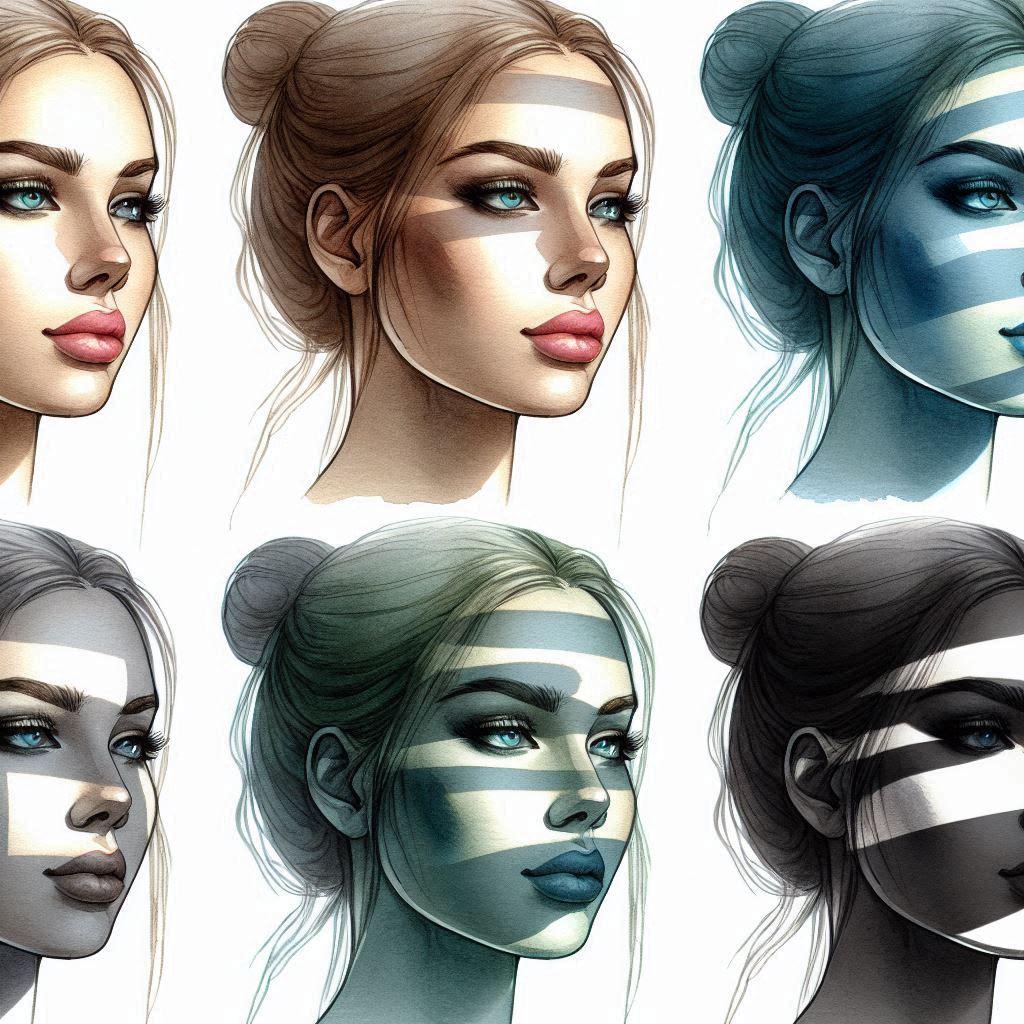
- Determine the direction and intensity of your light source.
- Observe how it affects the highlights, midtones, and shadows on the face.
Creating Form with Shadow
- Use shadow to define the contours of the face.
- Pay attention to cast shadows and core shadows to create a three-dimensional effect.
Capturing Likeness
The ultimate goal of portrait painting is to capture the likeness of your subject. Here are some techniques to help you achieve this:
Observation Skills
- Spend time studying your subject’s unique features.
- Practice quick sketches to train your eye.
Proportions and Measurements
- Use reference points to ensure accurate placement of features.
- Employ techniques like the “sight-size” method for precise measurements.
Capturing Expression
- Pay attention to subtle nuances in expression.
- Focus on the eyes and mouth, as they convey the most emotion.
Color Theory in Portrait Painting
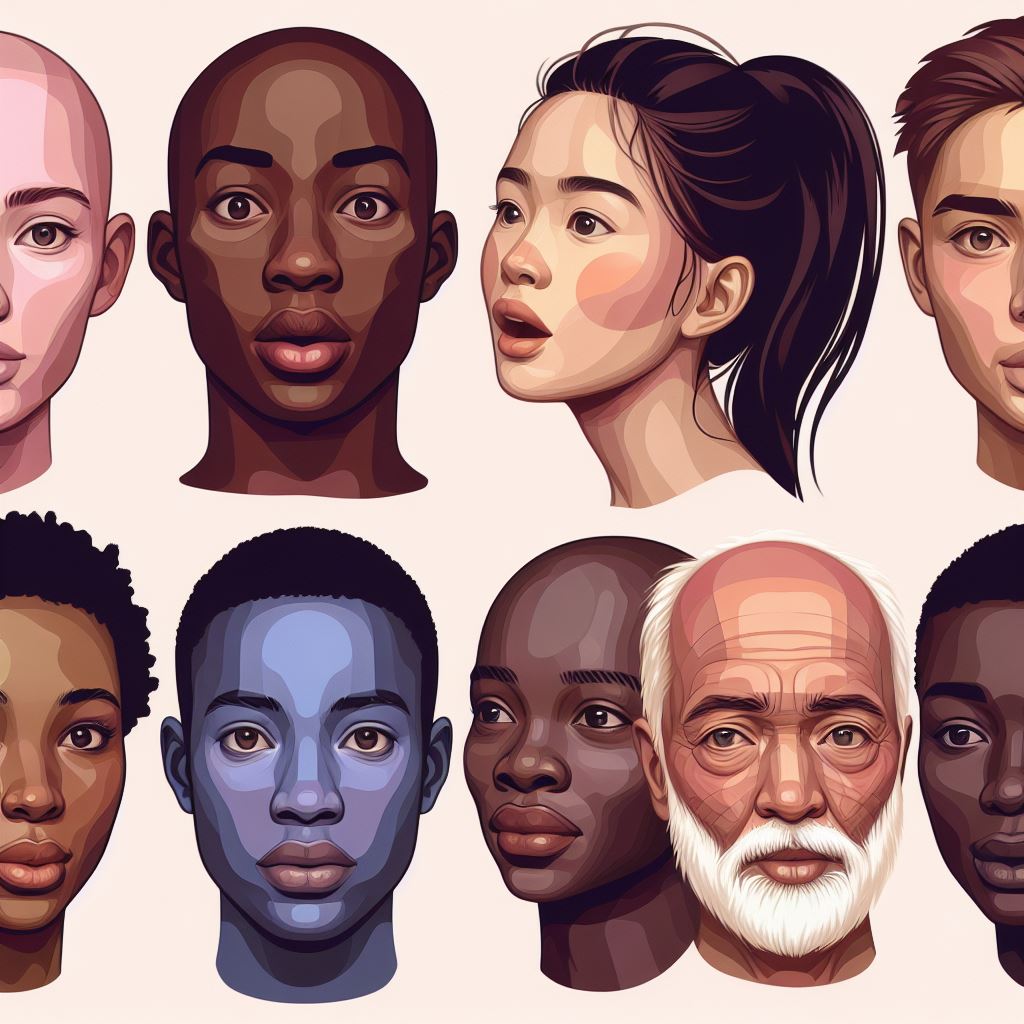
Understanding color is crucial for creating lifelike skin tones and capturing the mood of your portrait.
Mixing Skin Tones
- Start with a basic palette of warm and cool colors.
- Experiment with different combinations to achieve a range of skin tones.
Color Temperature
- Use warm and cool tones to create depth and dimension in the skin.
- Understand how lighting affects the perceived color of skin.
Complementary Colors
- Use complementary colors to create contrast and visual interest in your portraits.
Techniques for Different Mediums
Each medium requires specific techniques to achieve the best results:
Oil Painting Techniques
- Utilize the wet-on-wet technique for smooth blending.
- Experiment with glazing for luminous skin tones.
Acrylic Painting Techniques
- Work quickly to take advantage of the fast-drying nature of acrylics.
- Use layering techniques to build up color and depth.
Watercolor Techniques
- Master the wet-on-wet and wet-on-dry techniques.
- Use negative space to create highlights and define features.
Common Pitfalls and How to Avoid Them
Even experienced artists can fall into common traps. Here’s what to watch out for:
- Overworking the painting
- Neglecting the background
- Focusing too much on details early on
- Ignoring the importance of values
Exercises to Improve Your Skills
Practice makes perfect! Try these exercises to hone your portrait painting skills:
- Quick gesture drawings to capture the essence of a face
- Value studies in black and white
- Color mixing exercises to perfect skin tones
- Self-portrait practice using a mirror
Bringing It All Together
As you embark on your portrait painting journey, remember that every artist develops their unique style over time. Don’t be afraid to experiment and find what works best for you. Keep these key points in mind:
- Start with a solid foundation in facial anatomy and proportions.
- Master the interplay of light and shadow to create depth and dimension.
- Develop your observation skills to capture the unique essence of your subject.
- Experiment with color to create lifelike skin tones and convey mood.
- Practice regularly and don’t be discouraged by initial challenges.
With dedication and practice, you’ll soon find yourself creating portraits that not only resemble your subjects but also capture their spirit and personality. Remember, the goal is not just to create a likeness, but to tell a story and evoke emotion through your art.
As you continue to refine your skills, don’t hesitate to seek inspiration from master portrait painters throughout history. Study their techniques, analyze their use of color and composition, and incorporate what you learn into your own work. With time and perseverance, you’ll develop your unique voice in the world of portrait painting.
So, pick up your brush, face your canvas with confidence, and let your creativity flow. The world of portrait painting awaits, full of endless possibilities and the potential for profound artistic expression. Happy painting!


